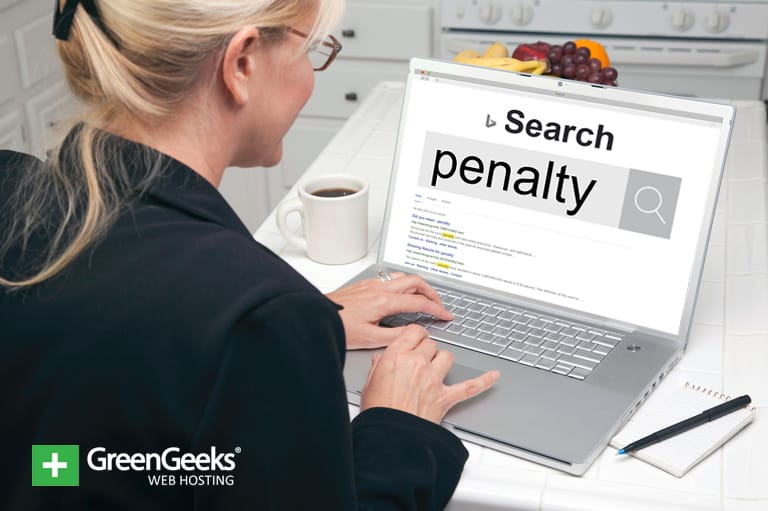Bing recently announced “inorganic site structure” penalties. Some of you may be wondering why anyone would care what happens at Bing. After all, Google rules search, right? Let’s take a look at what that means and how it could affect your search results on Bing.
Yes, Google is the dominant search engine. Worldwide, the Bing search website is responsible for a little over 5% of all desktop search, and less than 1% of mobile search.
Judging by those numbers, changes at Bing may not have the same impact on your website as changes at Google.
But if you live in North America, those percentages double. Here, Bing is responsible for one out of every ten of your desktop search result visitors.
So what happens at Bing, especially where penalties are concerned, shouldn’t be ignored.
What Does Bing Mean by “Inorganic Site Structure”?
The official definition provided by Bing says that inorganic site structure is a linking pattern that uses internal site-level link signals (with subdomains) or cross-site linking patterns (with external domains) in order to manipulate search engine rankings.
What “internal site-level link signals (with subdomains)” means is using subdomains to host content that isn’t really part of the main site in order to benefit from its good reputation.
We’ll talk about that more in the “Subdomain Leasing” section below.
“Cross-site linking patterns (with external domains)” means splitting a website up into multiple smaller websites and linking between those sites, or redirecting traffic from various domains to one website.
We’ll go into more detail about those practices in the “Private Blog Networks” and “Doorway Pages” sections.
People have been using these tactics for a long time. Bing has just created the “inorganic site structure” tag to describe the tactics and put the penalties into context.
Website Boundaries
Despite what you call it, what we’re talking about is duplicate content policy. Duplicate content is something search engines have been penalizing for decades.
What Bing is doing now is trying to define “website boundaries.” Recognizing when multiple subdomains are legitimately part of the same site and when they are not.
In the image below, everything inside the dotted line is considered part of the same website. Even though some parts of the site are on subdomains, they are legitimately created subdomains. They keep different areas of the site separate, such as support.xbox.com.
The separate sections all fall within the same website boundaries. So Bing treats the subdomains as if they belong to the main domain. They are part of the main site. That passes site-level signals, the main site’s “good reputation” that we talked about earlier, to the subdomains.
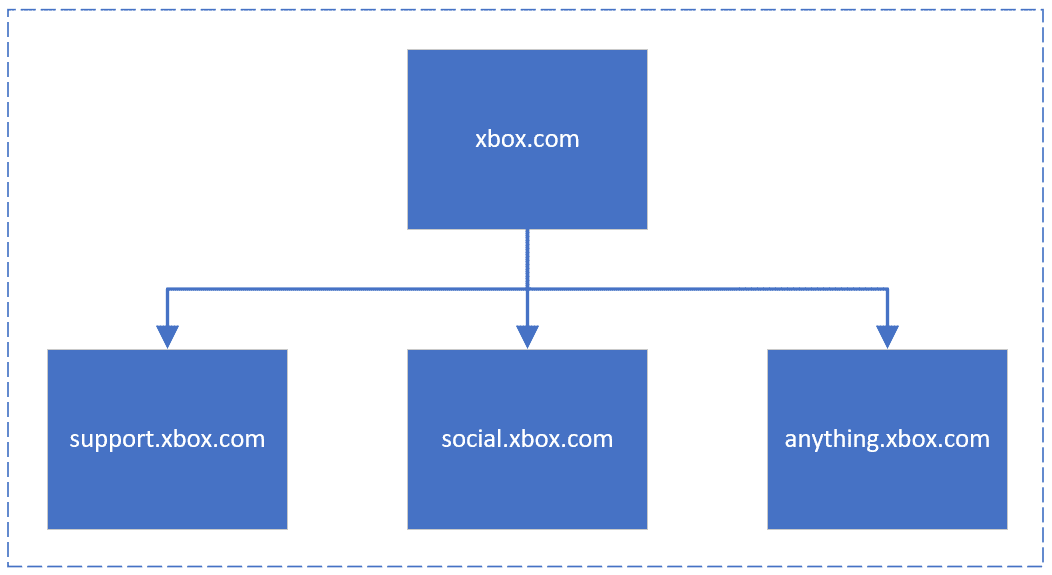
On the other hand, these WordPress subdomains are all distinctly different sites on subdomains of wordpress.com. So each subdomain is within its own website boundaries, and no site-level signals are passed to the subdomains. The subdomains do not benefit from the excellent reputation of wordpress.com.
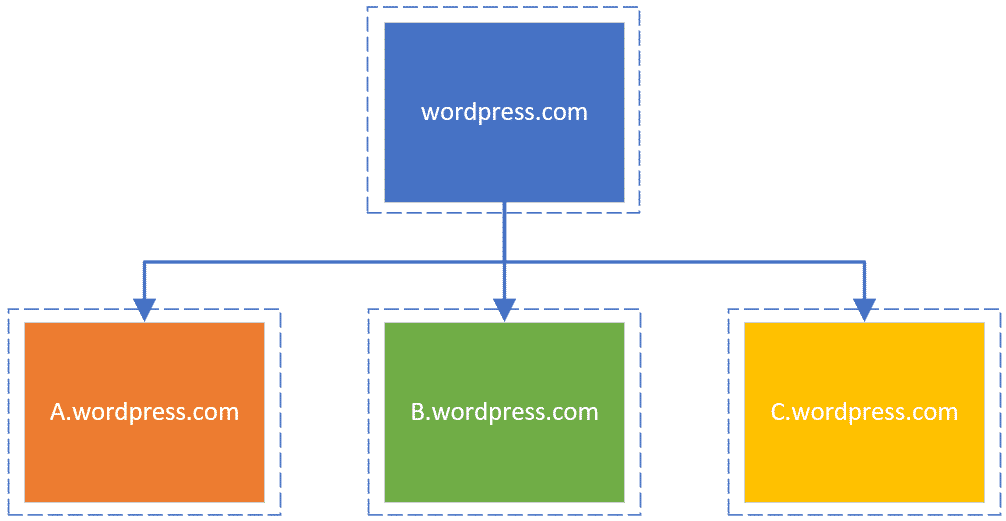
These are examples of what Bing calls legitimate website boundaries. No problems, no penalties.
On the other hand, if you create a website structure that purposely misrepresents website boundaries, that’s a violation of the Bing Webmaster Guidelines. These are the sites that will potentially be penalized.
Let’s take a closer look at what those violations are.
Private Blog Networks
In many cases, a single website is split unnecessarily across multiple domains. Those domains all cross-link to each other, in an attempt to send false site-level signals. Often referred to as “rank-boosting.”
All of the sites interlink with each other. The content of the individual sites is all related, so Bing sees them all as essentially the same site.
The dotted line in this image shows that even though they are different domains, Bing considers them to be within the same website boundary.
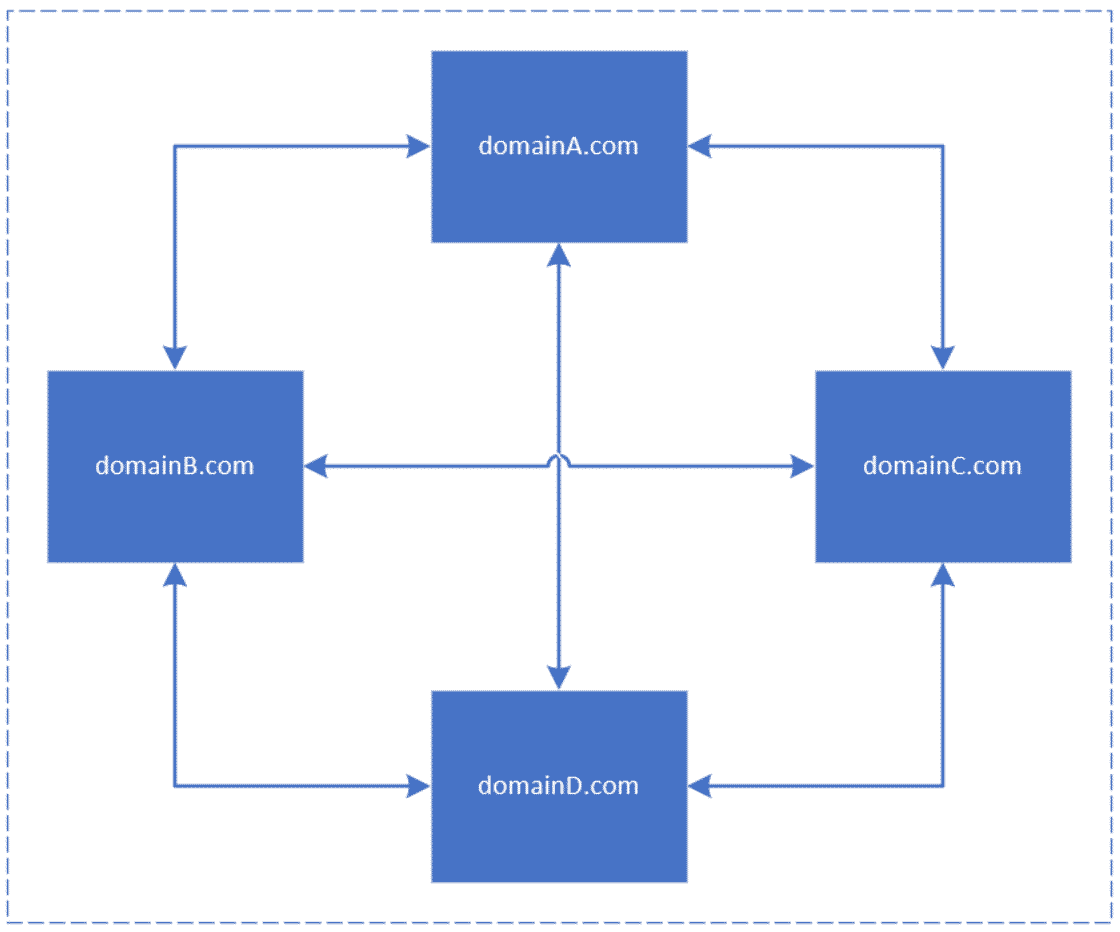
This kind of set up is a violation of the Bing Webmaster Guidelines and is at risk of being penalized.
Doorway Pages
Doorways are pages that are artificially optimized for specific keywords or search queries. It’s an old practice that started with pages, but these days it’s usually done with different domains.
The doorways aren’t pages or sites about the keywords they’re optimized for. They are decoys to pull you in and then redirect you to another location.
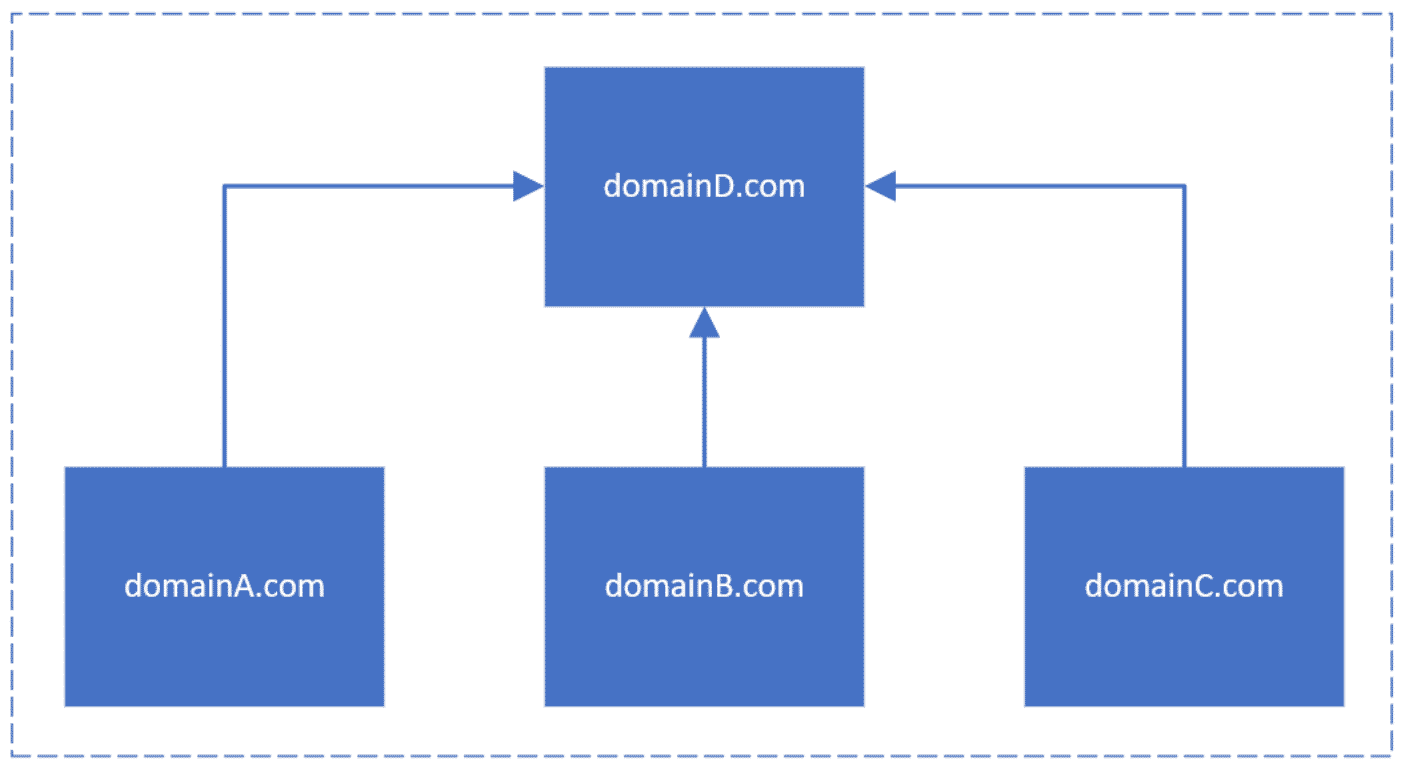
A variation on this tactic is doorway sites that have index pages that are super keyword optimized, while the rest of the site is unrelated (or loosely related).
In that case, the doorway sites don’t redirect, but the result is the same. You’re being drawn to a page that isn’t what it claims to be.
That is also a violation of the Bing Webmaster Guidelines, and all of those sites are at risk of being penalized.
Subdomain Leasing
This one is interesting to me. But maybe that’s because I wasn’t aware of the practice before reading the Bing article. Clearly, I’m not staying up to date on the latest black hat SEO methods.
But subdomain or subfolder leasing is when a successful site, or a site with a good search engine ranking, actually gives a subdomain to a third party.
Well, not “gives,” since this is almost always a financial arrangement. The main site has nothing or very little to do with the subdomain.
Why on earth would you do that? Pay for a subdomain on a successful site? To reap the benefits of the positive site-level signals, of course!
The larger question for me is, why would a legitimate site sell-off space on its domain like that?
This is what it looks like. As you can see, Bing has classified the subdomain as a separate site.
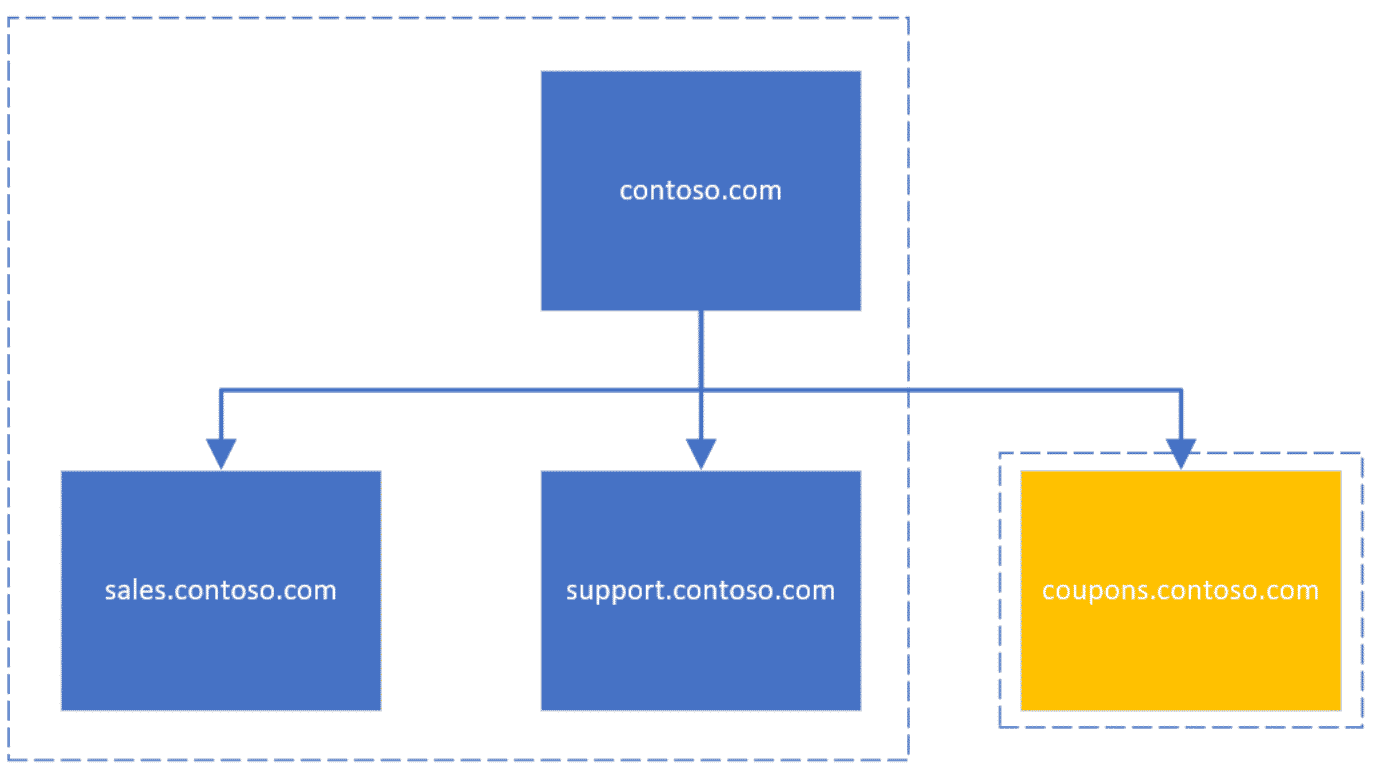
This is a violation because, as far as Bing is concerned, the subdomain is buying ranking signals, which they see as the same as buying links. As you may have guessed, that is not cool. Not at Bing or any other search engine.
Why These Practices Are a Problem
You may be thinking that the shady practices here don’t affect your website, but they can.
If you run a website dedicated to a popular subject, let’s say shoes, you are competing with every other shoe site on the web. You probably go to great lengths to optimize your SEO using legitimate practices.
You’re playing fair.
But whenever you check the search engines, you see that Molly’s Shoecastle Upon Tyne is ranking higher than your site in the results.
But Molly’s site isn’t really about shoes at all. It’s just hundreds of affiliate links and weak, spammy content.
Because Molly isn’t playing fair.
She’s using a site network and doorway pages, so all of her internal links are seen as external. External links carry more weight, so she’s getting an undeserved boost in the search engine results.
And if she can get those site-level signals onto a few pages that don’t belong to her, the pages on her site will have even more of an unfair advantage over your rule-following pages.
That’s what the Bing Webmaster Guidelines are trying to prevent.
How to Avoid Being Penalized by Bing for Inorganic Site Structure
It’s unlikely that you could accidentally run afoul of the Bing inorganic site structure rules and suffer a penalty. Most of the things that can draw attention to your site have to be done intentionally.
But there are some steps you can take to make sure Bing doesn’t suspect that you’re up to no good.
- Don’t lease out subdomains. But you knew that already.
- If you use subdomains legitimately, make sure you have high-level navigation linking to them. Most of the subdomain leasing cases Bing reviewed did not have direct navigation between the main site and the subdomain. Or there was a link, but it was buried in a footer or otherwise difficult to find.
- Don’t provide a free service on your site’s subdomains. For example, running a multi-user WordPress setup or otherwise letting people you don’t know set up camp on your domain. Usually, Bing won’t penalize the main site for bad things happening on a subdomain. But if you have 100 subdomains and 95 of them are full of spammy content, your primary domain will be penalized.
- Perform a security check. If a subfolder or subdirectory of your site is hacked and compromised, you may not even realize it. But if Bing picks up on it, they’ll penalize you. (If you host your site at GreenGeeks, we’ve got a good part of your security covered.)
What You Can Do if You’ve Been Penalized
The first thing you should do is check your website structure and make sure you aren’t doing anything that runs afoul of the Bing Webmaster Guidelines.
If there are no indications that you’re doing anything wrong, and you feel like you’ve been unfairly penalized for inorganic site structure spam, you can contact Bing Webmaster Support and file a reconsideration request.
There’s no guarantee that Bing will lift the penalty, but they will consider your request.
In general, though, it’s in your best interest to avoid using any shady practices to boost SEO.
There are plenty of legitimate ways to improve your SEO game. You don’t have to resort to dangerous practices.
Images courtesy of Bing Blogs.

